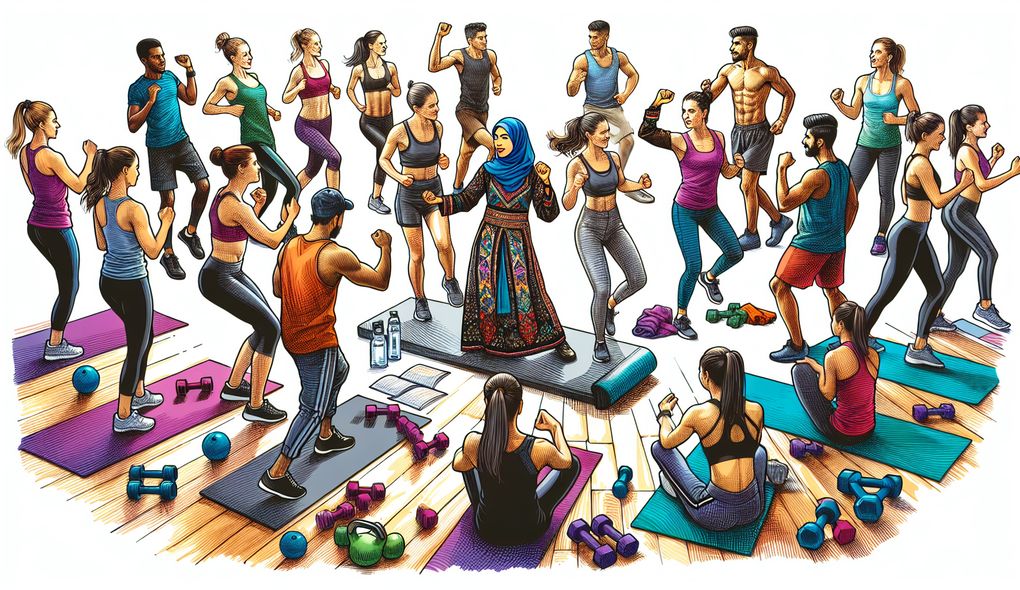Can you describe a time when you had to modify a class or exercise for a participant with special needs or limitations?
SENIOR LEVEL

Sample answer to the question:
Sure! There was a participant in one of my fitness classes who had a knee injury and couldn't do any high-impact exercises. To accommodate their needs, I modified the class routine by replacing jumping jacks and burpees with low-impact alternatives like step touches and standing knee lifts. I also provided variations for exercises that involved lunges and squats, so they could still participate without putting pressure on their injured knee. Throughout the class, I closely monitored their form and provided additional guidance and support when needed. By making these modifications, I ensured that the participant could still engage in the workout and experience a challenging but safe session.
Here is a more solid answer:
Certainly! In one of my group fitness classes, there was a participant with arthritis who had difficulty performing exercises that involved gripping weights or using resistance bands. To accommodate their needs, I modified the class by incorporating alternative equipment like foam balls and resistance loops with handles that were easier for them to grip. I also adjusted the intensity and range of motion for exercises, ensuring that they could still participate without exacerbating their condition. Additionally, I provided personalized modifications for each exercise, emphasizing proper form and joint-friendly movements. Throughout the class, I regularly checked in with the participant, offering encouragement and support. By modifying the class in these ways, I created an inclusive and supportive environment for the participant and helped them progress towards their fitness goals.
Why is this a more solid answer?
The solid answer goes into more detail about the specific modifications made for the participant with arthritis. It emphasizes the importance of adapting not just the equipment, but also the intensity and range of motion of exercises. The answer also highlights the need for personalization and regular check-ins with the participant to provide individualized support. However, it could still provide more examples and showcase how the instructor's communication and interpersonal skills were utilized to create an inclusive and supportive environment.
An example of a exceptional answer:
Absolutely! In one of my group fitness classes, I had a participant with a visual impairment who required additional guidance and support to fully participate. To ensure their inclusion and safety, I took several steps to modify the class. First, I communicated with the participant before the class to understand their specific needs and concerns. During the class, I provided verbal cues and descriptions for each exercise, ensuring they understood the movements and could perform them correctly. I also utilized tactile cues, gently guiding their positioning and alignment during exercises. To create a sense of inclusivity, I encouraged other participants to provide verbal encouragement and support to the visually impaired participant. Additionally, I created a safe workout space by ensuring that obstacles or potential hazards were clearly identified and communicated. By taking these measures, I not only modified the class to accommodate the participant's visual impairment but also fostered a supportive and inclusive atmosphere for everyone in the class.
Why is this an exceptional answer?
The exceptional answer goes above and beyond in its description of the modifications made for a participant with a visual impairment. It shows a high level of adaptability, creativity, and inclusivity in the instructor's approach. The answer showcases strong communication skills and highlights the importance of pre-class communication and collaboration with the participant to understand their specific needs. The use of verbal and tactile cues, as well as the encouragement of support from other participants, demonstrates excellent interpersonal skills. Overall, the exceptional answer provides a comprehensive and detailed account of how the instructor successfully modified the class to ensure the full participation and safety of the visually impaired participant.
How to prepare for this question:
- Familiarize yourself with common special needs or limitations that participants may have, such as injuries, arthritis, visual impairments, or mobility issues. Research and understand the modifications that can be made to accommodate these needs.
- Practice creating alternative exercises or variations for common movements to cater to different abilities or limitations. This will help you become more comfortable and confident in modifying your classes.
- Develop your communication skills, both verbal and non-verbal, to effectively instruct and support participants with special needs. Consider practicing giving clear and detailed cues and descriptions.
- Stay up to date with industry standards and best practices for working with participants with special needs. This includes attending workshops, seminars, or obtaining specialized certifications if available.
What are interviewers evaluating with this question?
- Adaptability and creativity in class design and execution
- Ability to create and lead dynamic workouts that are engaging and effective
- Proficiency in exercise technique and safety
- Excellent communication and interpersonal skills

